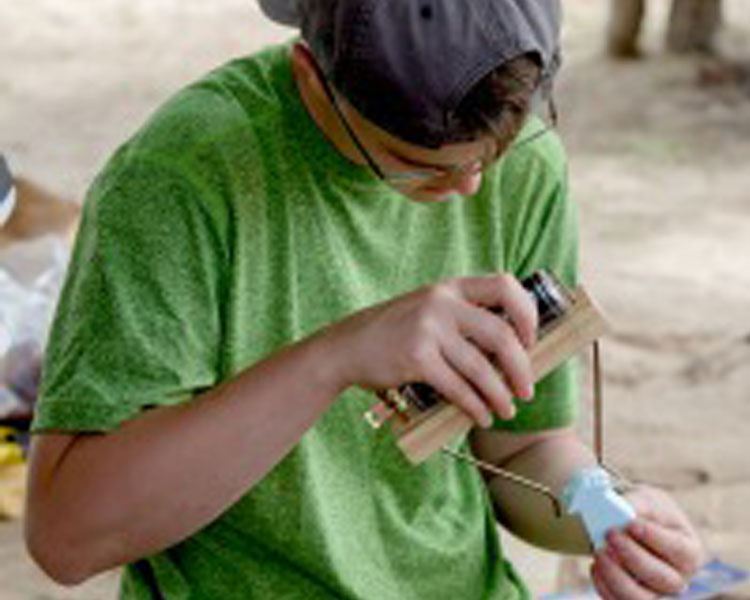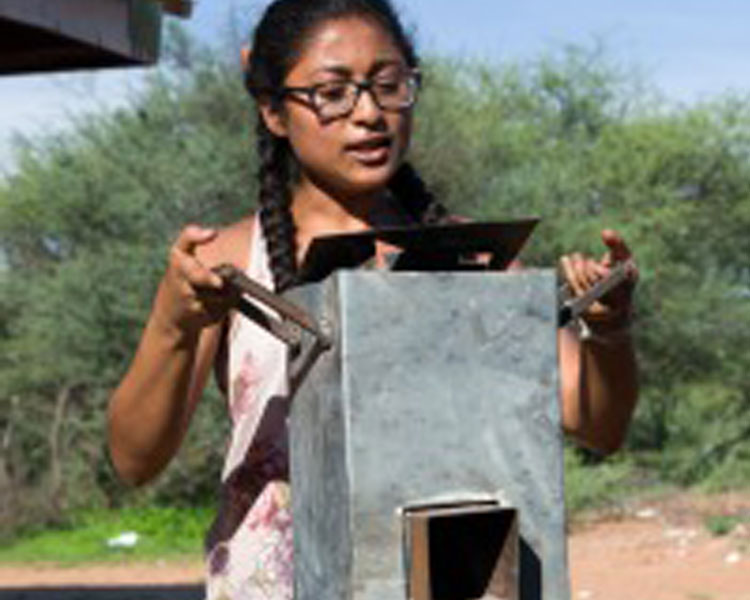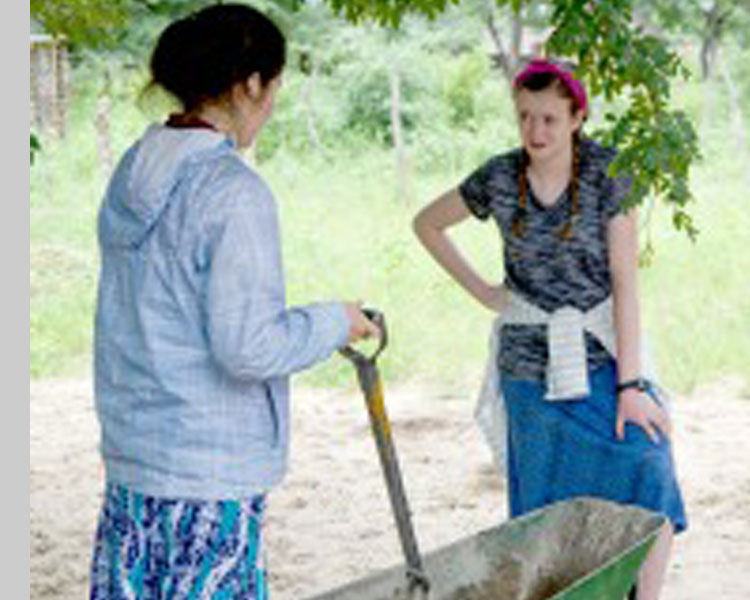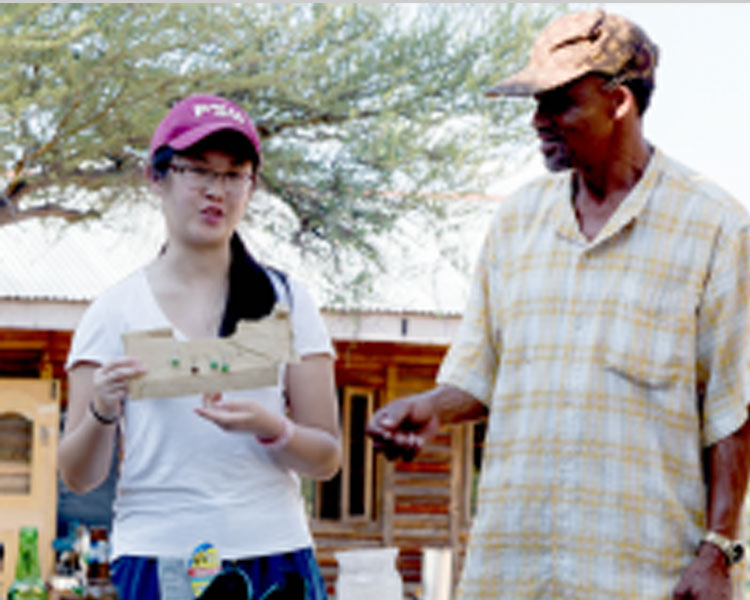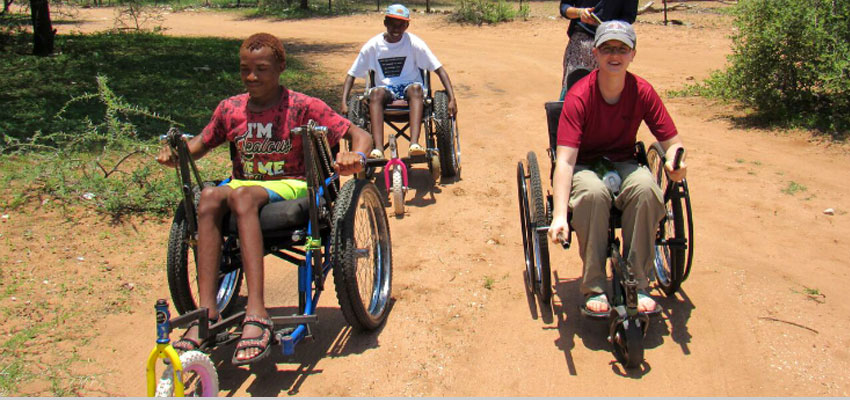
Technologies for income generation, crop processing, cooking, mobility, and low-cost blacksmithing all shared the stage during a month of travel in January 2017 when a team from D-Lab visited two villages in Botswana, D'kar and Kaputura, for project follow-up and relationship building. The team pulled members from both the D-Lab: Development course (Annie Dai '19, Kavya Pathak '17, and Orlando Ward-Santos '17) and the D-Lab: Mobility course (Mina Blume '17, Cady Lytle '18, and Shannon McCoy '19). D-Lab Founding Director Amy Smith, MIT Senior Lecturer in the Department of Materials Science and Engineering Mike Tarkanian, These Hands founder and community partner Thabiso Blak Mashaba, community partner and IDDS 2016 participant Keemenao Matale, and D-Labber Justin Carrus '17 also traveled with the team.
The team first traveled to the village of D'kar, the host of IDDS 2016: Botswana. In an intense 10-day period of project work, students worked with community members to prototype new approaches, refine existing designs, and conduct experiments to advance solutions to problems identified and pursued by IDDS participants.
Income-generationg projects: glass beads, Morama nut shelling, a rocket stove, and a deep-sand wheelchair
One project focused on income generation for locals. By harnessing the power of the sun, a Fresnel lens, and hand-crafted mold allows old glass bottles to be melted down and reshaped into glass beads for jewelry-making, a common source of income generation in this area. During the trip, different mold-release techniques were investigated as well as strategies for attaching the glass beads to necklaces and bracelets.
In a similar vein, another project focused on a crop processing problem for another source of income generation. A nut, the Morama, indigenous to the region is highly valued now for its use in a roasted beverage, but the shell of the nut is very difficult to crack. The team from MIT brought some new concepts to try and worked to refine a prototype created during IDDS. Three designs were finished and are set to move on to a phase of low-volume production.
Another project aimed to leverage rocket stove technology to create a small cookstove capable of efficiently burning "rubbish" firewood, small scraps that would normally be left behind when harvesting wood. This project is motivated by a scarcity of firewood in the region and saw progress in the form of some new prototypes and plans for extended user testing and home trials.
The final project focused on mobility by bringing a new design for a wheelchair capable of navigating the deep sand found in this area. Building on work during the fall semester, the members of the D-Lab: Mobility class continued refining their design and began extensive user testing with a community member named Jephtha who currently uses a South African made Rough Rider wheelchair. In the final days, the team planned for a lengthy trip to the General Store some two kilometers away, further than Jephtha had ever traveled before on his own power. The team made the journey without any problems!
Blacksmithing and Build-Its in Kaputura
After D'kar, the team traveled north to Kaputura, a small settlement of fewer than 1,000 residents. A previous D-Lab Creative Capacity Building training participant was the only connection, but after only a few days the team left with many new friends.
The primary motivation for traveling to this village was to spend time working with the local blacksmith, Michael, who made hoes, knives, and axes for much of the Okavango Delta region. Mike Tarkanian, MIT's very own practicing blacksmith, worked closely with the team as the local blacksmith shared his work practices and also some problems he faced. At Michael's request, the team worked to raise his anvil and forge to a standing height as well as develop some low-cost bellows.
In addition to the team's work with Michael, the group held Build-It activities with community members to share some of D-Lab's technologies and gauge interest for a future Creative Capacity Building training. Community members made corn shellers, hot wire foam cutters, and some extremely popular corn "coffee." These activities were a precursor to followup by community partner These Hands, which will hold a week-long Creative Capacity Building training later this year.
Beyond project work, the team learned to fetch water, launder clothes by hand, and appreciate the conversation afforded by a 12-hour bus ride. Community members opened their homes for stays where students were able to live with families and learn more about life in the Kalahari. Students learned to make arrowheads, set bird traps, and produce the four different types of clicks essential to many languages in this region. Meals were prepared, friendships cemented, and many a laugh shared as the team built upon work from the semester and learned more about the context in which these incredible people live.

